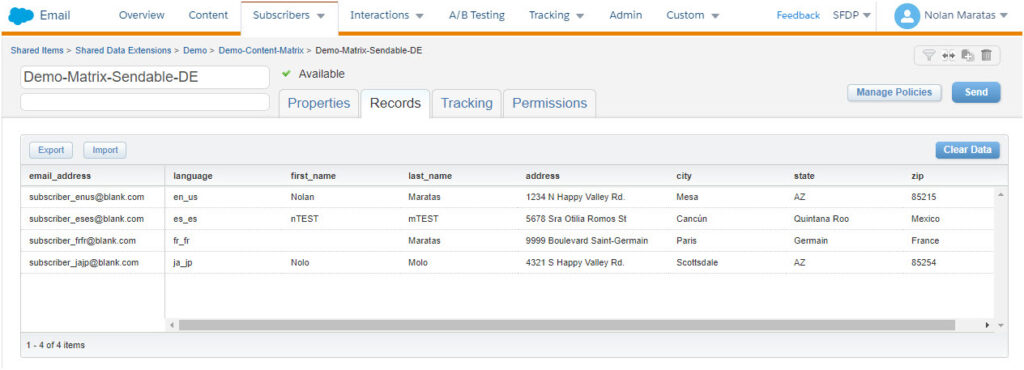Content LookupRows
This function returns a rowset from a data extension where the field matches the specified value. This function returns a maximum of 2000 rows. To better control the number or order of rows returned please use the LookupOrderedRows function instead. Using the LookupOrderedRows function enhances script performance. But for this example, we will focus on how to use the standard LookupRows function.
- LookupRows(1, 2, 3)
Content Lookup Benefits
Here are some reasons why you might want to consider using a Content Lookup approach:
- The content lookup approach works best when emails need to support multiple languages and or segments.
- The content lookup approach allows the dynamic email to scale to evolving business needs.
- The content lookup approach allows your email to scale to evolving business needs.
- The content lookup approach allows us to separate email content from the email framework which makes it easier to add, remove, or modify content without having to touch code.
Sendable Data Extension
This is the sendable data extension. You’ll notice that each subscriber has a language preference. We’ll use the language preference from the sendable DE to match against the language field from the content DE so that we can return the correct row in our LookupRows() script. You can download my sample data for the sendable DE by clicking here.

Content Data Extension
This is the content data extension. You’ll notice that each row contains content that is specific to a language. We’ll use the subscribers language preference to return the correct translated content to use within the email. Simply add more rows so that your email can scale to support additional languages. You can download my sample data for the content DE by clicking here.

LookupRows Function
This example returns copy from the content DE based on subscribers language preference.
Gallery











 by
by
Hi Everyone! Feel free to pull the full code from the link below. I hope this helps.
AMPscript LookupRows Function Intermediate Level
https://gist.github.com/nmaratasdev/1136f6678b787ff10706b899a8406f75